#symmetry and patterns
Explore tagged Tumblr posts
Text
I can't get any decent sleep so I did what any sane person would do
Draw more
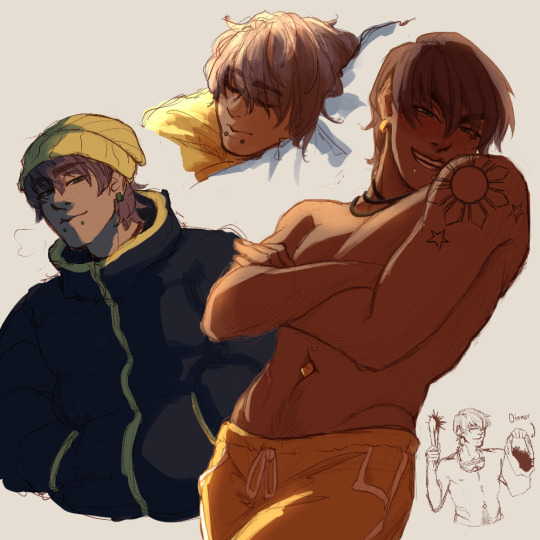
Ya think xyx would enjoy the fun activity of hunting sea urchins to snack on?
Of course I had to draw him from the birthday illustration by robobarbie
#blooming panic xyx#blooming panic#bloomic xyx#It's been a while since I had to draw the sunburst pattern#It certainly brought back memories where I broke down trying to make it symmetrial#I need decent sleep
1K notes
·
View notes
Photo

~ Blue and Gray ~
#snowflakes#ice#ice crystals#geometry#patterns#symmetry#blue#blue gray#bokeheffect#macro photography
471 notes
·
View notes
Text
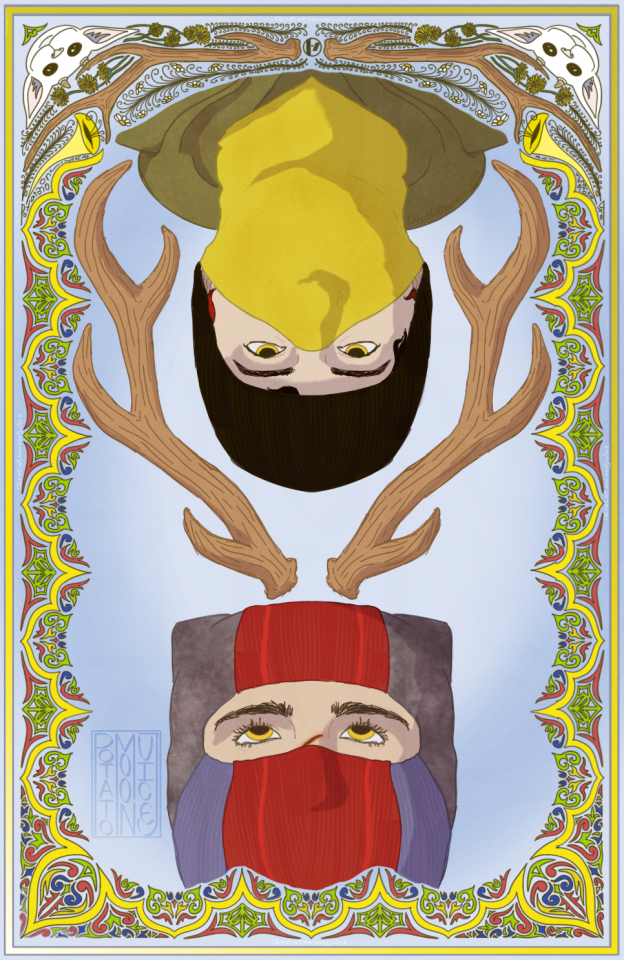
When our fingers touch, I feel my way back home~~
#twenty one pilots#art#tyler joseph#clancy#josh dun#artists on tumblr#potatomoonjuice#tøp#twenty øne piløts#digital art#artwork#artists of tumblr#twenty one pilots clique#skeleton clique#clikkie#tumblr clique#clique#clique art#tøp clique#clanky#clancy kitty#clancy album#clancybearer#torch bearer#torchclancy#card#character card#symmetry#pattern#dema
41 notes
·
View notes
Text

Dutch Quadrants
#the Netherlands#holland#quadrants#photography#landscape#nature#beautiful#symmetry#amsterdam#rotterdam#delft#photolovers#utrecht#denhaag#geometric#abstract#mandala#pattern#depth of field#travel photography
246 notes
·
View notes
Text






04/17/25
#my art#my photography#photography#nature#trees#spring#symmetry#psychadelic#psychadelic art#my walk today#pnw#pacific northwest#blue sky#beautiful day#spring moodboard#telephone wires#pinkcore#pink aesthetic#art#cottagecore#fairycore#satisfying#lovely#spring blossoms#look up#chandelier#patterns#green#pink and green
46 notes
·
View notes
Text

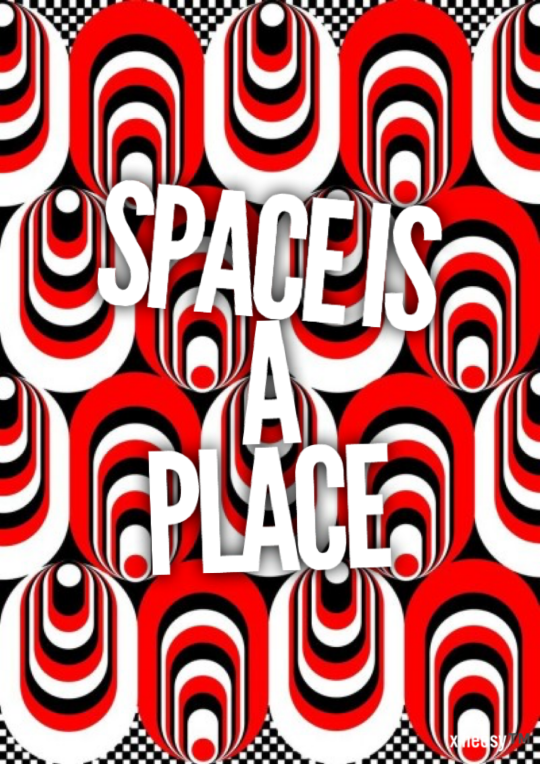

𝙸 𝙵𝚎𝚎𝚕 𝚂𝚙𝚊𝚌𝚎 𝚋𝚢 𝙻𝚒𝚗𝚍𝚜𝚝𝚛ø𝚖 x 🎵
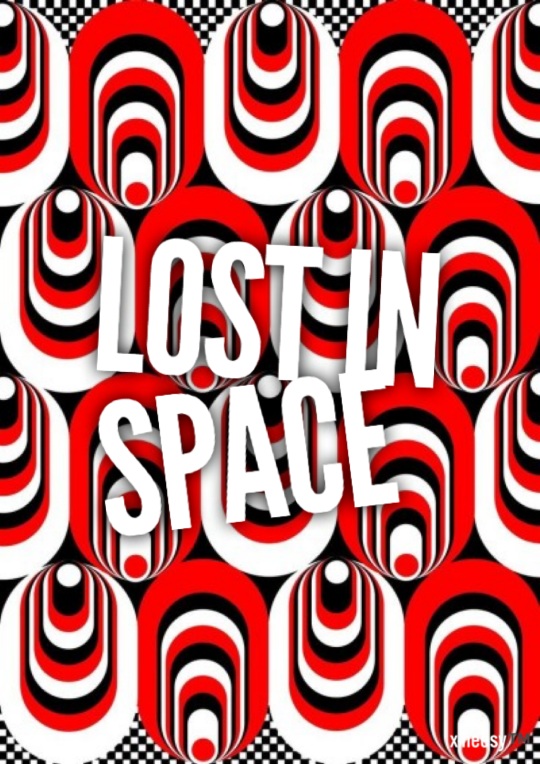
#l o v e#vintage#1970s#pattern#x-heesy#my art#typography#iphone art#1/2025#symmetry#aesthetic#now playing#music and art
36 notes
·
View notes
Text
When Drag Queens Were King
With the conflicts about LGBTQIA+, it is fascinating to look back at the history of gays in American history. Once, not only accepted but widely celebrated, drag was a prominent face in the entertainment industry.
During the Shakespearean period, in the late 16th century and early 17th century, women were not permitted to perform on the stage. Men played the female roles. While this wasn’t exactly “drag”, it’s possible gay men took advantage of the opportunity to express their feminine sides.
Originally, drag was not only applied to men performing while dressed as women but, any performer dressed in costumes other than their own gender. In fact, the first recorded drag contest and “ball” in America took place in 1867! Men and women performed in Harlem, New York. There were drag queens and drag kings. Notable during the 1880’s and 1890’s was William Dorsey Swann. Known as the Queen of Drag, Dorsey was more than just a drag queen. An African American, born into slavery, was known for holding secret drag balls. The “Queen of Drag”, Swann, is believed to be the first person in the United States to lead a gay resistance. He held secret drag balls in Washington, DC. One part of the drag balls included a competition known as a “cakewalk”, originally held on plantations by slaves. Couples would dance in precise steps and formation. It is believed to have been a way to subtly make fun of the formal white dances pre and post emancipation. As dance contests, the winners were awarded with cakes!


The Jazz Age (from 1920 - early 1930’s) in large cities like New York, Chicago, and San Francisco saw the popularity of drag performers rise. Minstrel shows, vaudeville, and burlesque provided drag entertainment. Unlike many drag performers, Jean (Gene) Malin was not trying to impersonate a woman. During Prohibition, the days of the “pansy craze”, Malin was openly gay and proud of it. Described as flamboyant and effeminate, he entertained audiences with a wonderful sense of humor. At six feet tall and two hundred pounds, Malin had a lisp that delighted his fans. He was capable of defending himself when needed. He performed in high end nightclubs and was featured in films and on Broadway.

In 1920 Drag Balls and contests were so popular they were even represented in film. Men were referred to as “pansies” or “sissies” and were often portrayed as clothing designers or tailors, hairdressers, or choreographers and dancers. Flamboyant and effeminate, they added humor to films. Women were portrayed as more masculine and dressed in male fashions.
There were actors and actresses who were known to be homosexual, if not to the general public, usually within their professional circles. In 1930’s, Marlene Dietrich, who made no secret of her bisexuality, had the first passionate same sex kiss in a film. However, that wasn’t the first same sex kiss in film. In 1922, Cecil B. DeMille directed a silent movie l, “Manslaughter”, that included an orgy. Although the first same sex kiss has been attributed to the later film, “Wings” in 1927, it was the earlier silent movie that broke the mold.

Drag has once again become popular in America with shows like RuPaul’s Drag Race. On the other hand, the country is in turmoil. The Lesbian, Gay, Bisexual, Transgender, Queer/Questioning, Intersex, Asexual+ (LGBTQIA+) community is already beginning to feel the change in the air, from the White House to every house, apartment, mobile home, hotel, or tent. The president has already signed several executive orders that will negatively impact LGBTQIA+ communities across the country. We can’t allow America to return to days of the Hays Code. We’ve too far to allow it to slip away.
Source: When Drag Queens Were King
0 notes
Text

68 notes
·
View notes
Text

Always remember to look up, the intricate pattern on the ceiling of this church tower!
#photographyaddict#photography#travel#throughthelense#justgoshoot#macro#cottagecore#naturecore#aesthetic#architechture#church#pattern#symmetry#medieval#york#england
81 notes
·
View notes
Text
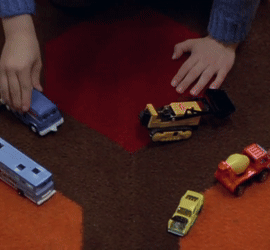



THE SHINING (1980) INSIDE NO. 9 | S3E5 "Diddle Diddle Dumpling"
#the shining#the shining 1980#kubrick#stanley kubrick#in9#inside no 9#inside no. 9#in9 x film#diddle diddle dumpling#guillem morales#reece shearsmith#steve pemberton#i'm sure i've seen a version of this somewhere but here's mine i guess#they talk about the house in ddd being the shining-esque (& referring to kubrick generally) so this comparison is a given#as an aside - the review i read when i was doing “research” for the costumes post#pointed out the staircase and the rug are two different patterns#as an example of when the symmetry of the house starts to break#(which i tried to include in my “asymmetry” post)#and sally being on one side with the staircase pointed towards her. well.#vagueeyes.pdf#edit: switched the order to match the description order lol
18 notes
·
View notes
Text



So idk if this is a thing y’all are interested in, but it occurred to me I could show you how I go about creating patterns!
This will be a horseshoe crab. The first step was folding a piece of paper in half, for symmetry, and drawing half the front shape of the crab on it. Then I cut that out, drew on lines for where the little darts will go, and cut along those lines (well, I folded the paper back in half to cut the side darts). Now, I’m going to hold those darts slightly open and trace around this pattern piece onto a new piece of paper, because I’m trying out a new (to me) method of adding darts into a pattern without making a mock-up of the pattern first
#the pattern making process#honestly going to fold the next piece of paper in half too and trace it that way#better symmetry that way. I’ll also keep this piece of paper as the foam insert pattern#because this creature will have foam in it to keep its shape#wait actually looking at it maybe I don’t want to add space for the darts?#maybe I want them as-is to make it curve#yeah okay prototype time
42 notes
·
View notes
Text
Disclaimer: I’m about to go off on a geometric rant so idk. Also this a pro-Elriel post ✌🏼
But, I can’t help but feel like…
SJM solidified Elriel when she decided to write Nessian. Two sisters are with two brothers. The third brother not ending up with the third sister is like a puzzle missing it’s final piece. A disruption in the pattern deeply prevalent throughout the entire series. Three trials. Three mountains. Three Death Gods. Three feet to the Cauldron. Three is a number of fate. A holy number. A pattern. And tell me, does this match said pattern:
Two brothers and two sisters.
One brother and [insert red-head of choice].
It lacks balance. And, interestingly enough, we learn about a symbol of balance in HOSAB:
“A six-pointed star,” Ithan said […] “It is a symbol of balance,” She explained, moving away… “Two intersecting triangles, male and female, dark and light, above and below… and the power that lies in the place where they meet.”
Now back to the world of ACOTAR. Where can we find two interesting triangles [see: a set of three, three “points”]? The three Archeron sisters. And the three batboys.
Feyre and Rhys: The Leaders, or top of the Triangle. High Lady and High Lord. “Love me.” Night Triumphant and the Stars Eternal.
Nesta and Cassian: The Warriors, one side of the triangle’s base. Lady Death and the Lord of Bloodshed. “Touch me.” The General of the Illyrians and the Commander of the Valkyries.
Elain and Azriel: The Spys, the second side of the triangle’s base. The Seer and the Shadowsinger. “Sing me.” Death and the Lovely Fawn.
Together they are the foundation of the six-pointed star. They are a part of balance. An intersecting of power. Elain’s story is tied to her sisters. It’s tied to the third mountain. To the Night Court whose sigil is literally three stars. It’s tied to her transitioning from the trembling fawn to the fang beast. And her story, like both her sisters, is tied to a bat boy.
SJM made the bed with the three brothers x three sisters trope with Nessian. It only makes sense, or shall I say is rather obvious, that she will move forward and complete the pattern, achieving balance.
That’s all, your honor. I rest my case.
#not me ranting about triangles and threes lol#but you can’t tell me this doesn’t make sense#the symmetry isn’t cheesy or cliche#it’s literally a part of the pattern#THE PATTERN I TELL YOU#elain and azriel#pro elriel#Elriel
223 notes
·
View notes
Text

Birthday art for Best Girl <3
#fanart#owari no seraph#seraph of the end#mitsuba sangu#digital art#my art#lineart-ing hair is pain#Drawing any hair is pain actually#but worth it for best girl <3#I didn't know how to draw the bow all fancy like TvT#so I just put another pinwheel there XD#symmetry ruler saved me lol#omg that yukata gave me so much trouble#I just ended up drawing some circle patterns and called it a day TvT#deffo gotta get some asian pattern practice down
58 notes
·
View notes
Text
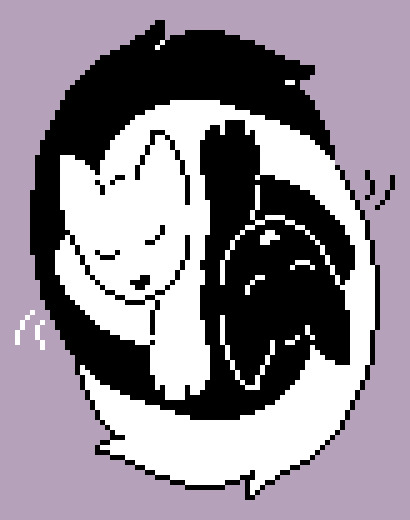


Heya everyone! These three will be available as cross-stitch patterns through @crossstitchforgaza's bundle for a 15USD donation, so consider donating if you'd be interested in stitching these. There's already at least a pattern by the wonderful @/ansitru in there, so i'd say it's pretty much a good bang for your buck to get even if you weren't interested in my kitties in particular. + you do a good thing
#pixelart#pixel art#krita#digital art#cross stitch#crossstitch#went away from my usual aseprite to get a central symmetry in krita#and it was. it was a Struggle y'all. but i think I've won in the end#there's some mess in the og pixelart version re: accidental extra color shades but it's fixed in the pattern versions#i'm not arting right now still but might post about these that have been done for a week or so#making the middle look natural was a Fight
17 notes
·
View notes
Text
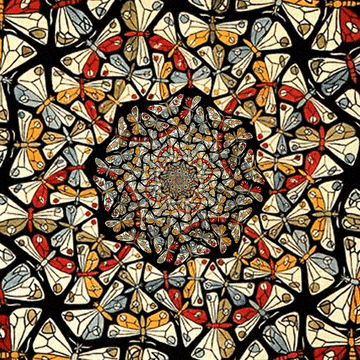
GIF by Feliks Tomasz Konczakowski
#SMS#design#butterfly#graphic#graphic design#math#infinite#pattern#infinity#insect#butterflies#inception#insects#konczakowski#symmetry#recursion#repetition#recursive#filling#repetitive#butterfly effect#geometrical#tessellation#escheresque#gif#giphy#flying#bug#animal#fauna
13 notes
·
View notes
Text
When Drag Queens Were King
With the conflicts about LGBTQIA+, it is fascinating to look back at the history of gays in American history. Once, not only accepted but widely celebrated, drag was a prominent face in the entertainment industry.
During the Shakespearean period, in the late 16th century and early 17th century, women were not permitted to perform on the stage. Men played the female roles. While this wasn’t exactly “drag”, it’s possible gay men took advantage of the opportunity to express their feminine sides.
Originally, drag was not only applied to men performing while dressed as women but, any performer dressed in costumes other than their own gender. In fact, the first recorded drag contest and “ball” in America took place in 1867! Men and women performed in Harlem, New York. There were drag queens and drag kings. Notable during the 1880’s and 1890’s was William Dorsey Swann. Known as the Queen of Drag, Dorsey was more than just a drag queen. An African American, born into slavery, was known for holding secret drag balls. The “Queen of Drag”, Swann, is believed to be the first person in the United States to lead a gay resistance. He held secret drag balls in Washington, DC. One part of the drag balls included a competition known as a “cakewalk”, originally held on plantations by slaves. Couples would dance in precise steps and formation. It is believed to have been a way to subtly make fun of the formal white dances pre and post emancipation. As dance contests, the winners were awarded with cakes!


The Jazz Age (from 1920 - early 1930’s) in large cities like New York, Chicago, and San Francisco saw the popularity of drag performers rise. Minstrel shows, vaudeville, and burlesque provided drag entertainment. Unlike many drag performers, Jean (Gene) Malin was not trying to impersonate a woman. During Prohibition, the days of the “pansy craze”, Malin was openly gay and proud of it. Described as flamboyant and effeminate, he entertained audiences with a wonderful sense of humor. At six feet tall and two hundred pounds, Malin had a lisp that delighted his fans. He was capable of defending himself when needed. He performed in high end nightclubs and was featured in films and on Broadway.

In 1920 Drag Balls and contests were so popular they were even represented in film. Men were referred to as “pansies” or “sissies” and were often portrayed as clothing designers or tailors, hairdressers, or choreographers and dancers. Flamboyant and effeminate, they added humor to films. Women were portrayed as more masculine and dressed in male fashions.
There were actors and actresses who were known to be homosexual, if not to the general public, usually within their professional circles. In 1930’s, Marlene Dietrich, who made no secret of her bisexuality, had the first passionate same sex kiss in a film. However, that wasn’t the first same sex kiss in film. In 1922, Cecil B. DeMille directed a silent movie l, “Manslaughter”, that included an orgy. Although the first same sex kiss has been attributed to the later film, “Wings” in 1927, it was the earlier silent movie that broke the mold.

Drag has once again become popular in America with shows like RuPaul’s Drag Race. On the other hand, the country is in turmoil. The Lesbian, Gay, Bisexual, Transgender, Queer/Questioning, Intersex, Asexual+ (LGBTQIA+) community is already beginning to feel the change in the air, from the White House to every house, apartment, mobile home, hotel, or tent. The president has already signed several executive orders that will negatively impact LGBTQIA+ communities across the country. We can’t allow America to return to days of the Hays Code. We’ve too far to allow it to slip away.
Source: When Drag Queens Were King
0 notes
Text


hubba bubba looking ass
#ignore how huge the ears are. they are going 2 be folded so i made them a little long#also ignore how unsymmetrical it is. it has charm ok. who needs symmetry#duck tape is for making the pattern! drew all over it with sharpie this morning#rambling
34 notes
·
View notes
Text





04/15/25
#my photography#nature#cherry blossoms#cherry blossom tree#flower moodboard#spring#spring aesthetic#spring moodboard#my walk today#pnw#pacific northwest#trees#floral#patterns#symmetry#asymmetry#look up#blue sky#sky#springtime#photography#flowers#pink flowers#pink aesthetic#pink#pinkcore#pink moodboard#beautiful#peaceful#moodboard
50 notes
·
View notes